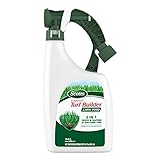“Unlock the Secrets to a Vibrant, Envy-Worthy Lawn!”
Introduction
A lush and healthy lawn is the pride of any homeowner, serving as a vibrant green canvas that enhances the beauty of your outdoor space. Achieving and maintaining such a lawn requires more than just regular mowing; it demands a comprehensive approach that includes proper care, attention to detail, and a bit of horticultural know-how. From understanding the importance of soil health and selecting the right grass type to mastering watering techniques and implementing effective pest control, there are several essential tips that can transform your lawn into a thriving, verdant oasis. Whether you’re a seasoned gardener or a novice looking to improve your lawn care routine, these tips will provide you with the foundational knowledge needed to cultivate a lawn that is not only visually appealing but also resilient and sustainable.
Seasonal Lawn Care: Adapting Your Routine for Year-Round Health
Maintaining a lush and healthy lawn requires a strategic approach that adapts to the changing seasons. Each season presents unique challenges and opportunities for lawn care, and understanding these can help ensure your lawn remains vibrant year-round. As the seasons transition, so too should your lawn care routine, beginning with the spring, which is a critical time for lawn rejuvenation. After the dormancy of winter, spring is the season of renewal. It is essential to start with a thorough raking to remove debris and dead grass, which allows sunlight and air to reach the soil. This is also the ideal time to aerate your lawn, especially if the soil is compacted. Aeration improves water and nutrient absorption, promoting deeper root growth. Additionally, applying a balanced fertilizer in early spring provides the necessary nutrients to support new growth.
As spring gives way to summer, the focus shifts to maintaining moisture and managing heat stress. During this period, it is crucial to water deeply but infrequently, encouraging roots to grow deeper into the soil. Early morning is the best time to water, as it reduces evaporation and fungal diseases. Mowing practices also play a significant role in summer lawn care. It is advisable to raise the mower blade to leave the grass slightly longer, which helps shade the soil and retain moisture. Moreover, regular mowing ensures that no more than one-third of the grass blade is removed at a time, reducing stress on the lawn.
Transitioning into fall, the emphasis should be on preparing the lawn for the upcoming winter. Fall is an excellent time for overseeding, as the cooler temperatures and increased rainfall create optimal conditions for seed germination. This practice helps fill in bare spots and thicken the lawn, making it more resilient. Fertilizing in the fall is equally important, as it provides essential nutrients that strengthen the grass for winter dormancy. Additionally, continuing to mow the lawn until growth slows significantly is recommended, as it prevents matting and reduces the risk of snow mold.
Winter presents its own set of challenges, primarily due to the dormancy of most grass types. During this time, it is crucial to minimize foot traffic on the lawn to prevent soil compaction and damage to the grass. Clearing away debris and fallen leaves is also important, as they can smother the grass and create an environment conducive to disease. While active lawn care is limited in winter, planning for the upcoming spring can be beneficial. Evaluating the lawn’s performance over the past year and identifying areas for improvement can guide future care strategies.
In conclusion, adapting your lawn care routine to the changing seasons is essential for maintaining a lush and healthy lawn. By understanding the specific needs of your lawn throughout the year, you can implement targeted practices that promote growth, resilience, and overall health. From spring rejuvenation to summer maintenance, fall preparation, and winter protection, each season offers opportunities to enhance your lawn’s vitality. With careful planning and consistent care, your lawn can thrive year-round, providing a beautiful and inviting outdoor space.
Watering Wisdom: Techniques for Optimal Lawn Hydration
Achieving a lush and healthy lawn is a goal for many homeowners, and understanding the nuances of proper watering is a crucial step in this endeavor. Watering wisdom involves not only knowing how much water your lawn needs but also understanding the best techniques to ensure optimal hydration. By mastering these techniques, you can promote a vibrant and resilient lawn that enhances the beauty of your outdoor space.
To begin with, it is essential to recognize that the amount of water your lawn requires can vary based on several factors, including grass type, climate, and soil conditions. Generally, most lawns need about one to one and a half inches of water per week, including rainfall. However, this is merely a guideline, and adjustments may be necessary depending on specific circumstances. For instance, sandy soils may require more frequent watering due to their quick drainage, while clay soils retain moisture longer and may need less frequent irrigation.
Transitioning to the timing of watering, early morning is widely regarded as the optimal time to water your lawn. Watering during the early hours, typically between 4 a.m. and 10 a.m., allows the grass to absorb moisture before the sun’s heat causes evaporation. This practice not only conserves water but also reduces the risk of fungal diseases that can occur when lawns remain damp overnight. Conversely, watering during the heat of the day is inefficient, as much of the water is lost to evaporation, and evening watering can leave the grass too wet, fostering disease.
In addition to timing, the method of watering plays a significant role in achieving optimal lawn hydration. Sprinkler systems are a popular choice for many homeowners, offering convenience and even water distribution. However, it is crucial to ensure that your sprinkler system is properly calibrated to avoid overwatering or underwatering certain areas. Regularly checking for clogged nozzles or misaligned heads can help maintain an even distribution of water across your lawn.
For those who prefer a more hands-on approach, using a hose-end sprinkler can be effective, though it requires more attention to ensure even coverage. Regardless of the method, it is advisable to water deeply and infrequently rather than shallowly and frequently. Deep watering encourages roots to grow deeper into the soil, enhancing drought resistance and overall lawn health.
Moreover, understanding the signs of overwatering and underwatering can help you adjust your watering practices accordingly. Overwatered lawns often exhibit symptoms such as yellowing grass, a spongy feel underfoot, and an increase in weeds like crabgrass. On the other hand, underwatered lawns may show signs of wilting, browning, and footprints that remain visible long after being made. By observing these indicators, you can fine-tune your watering schedule to better meet your lawn’s needs.
In conclusion, mastering the art of watering is a fundamental aspect of maintaining a lush and healthy lawn. By considering factors such as the amount of water needed, the timing of watering, and the method used, you can optimize lawn hydration and promote robust growth. With careful attention and a commitment to best practices, your lawn can become a verdant oasis that enhances the beauty and enjoyment of your home environment.
Soil Secrets: Enhancing Fertility for a Vibrant Lawn
Achieving a lush and healthy lawn is a goal for many homeowners, yet it often requires more than just regular mowing and watering. The secret to a vibrant lawn lies beneath the surface, in the soil. Understanding and enhancing soil fertility is crucial for promoting robust grass growth and maintaining a verdant landscape. To begin with, it is essential to assess the current condition of your soil. Conducting a soil test provides valuable insights into its pH level, nutrient content, and overall health. This foundational step allows you to tailor your lawn care practices to the specific needs of your soil, ensuring that any amendments you make are both effective and efficient.
Once you have a clear understanding of your soil’s composition, the next step is to address any deficiencies. One common issue is an imbalance in soil pH, which can significantly affect nutrient availability. Most grasses thrive in slightly acidic to neutral pH levels, typically between 6.0 and 7.0. If your soil test indicates that the pH is outside this range, consider applying lime to raise the pH or sulfur to lower it. These amendments should be applied according to the recommendations provided by your soil test results, as over-application can lead to further imbalances.
In addition to pH adjustments, enriching the soil with organic matter is a highly effective way to enhance fertility. Organic matter, such as compost or well-rotted manure, improves soil structure, increases water retention, and provides a slow-release source of essential nutrients. Incorporating organic matter into the soil can be done through top-dressing or by mixing it into the top few inches of soil. This practice not only boosts fertility but also encourages beneficial microbial activity, which plays a vital role in nutrient cycling and soil health.
Furthermore, selecting the right type of fertilizer is crucial for maintaining a nutrient-rich environment for your lawn. While synthetic fertilizers offer a quick nutrient boost, they can sometimes lead to nutrient runoff and environmental concerns. Alternatively, organic fertilizers, derived from natural sources, release nutrients more slowly and improve soil health over time. When choosing a fertilizer, consider the specific nutrient needs of your grass species and the results of your soil test. A balanced fertilizer with a ratio that matches your soil’s requirements will support healthy growth and reduce the risk of nutrient deficiencies.
Aeration is another important practice that can significantly enhance soil fertility. Compacted soil restricts root growth and limits the movement of air, water, and nutrients. Aerating the lawn, either through core aeration or spiking, alleviates compaction and allows the soil to breathe. This process creates channels for nutrients and water to penetrate deeper into the soil, promoting a healthier root system and more vigorous grass growth.
Finally, maintaining proper watering practices is essential for supporting soil fertility. Overwatering can leach nutrients from the soil, while underwatering can stress the grass and hinder nutrient uptake. Aim to water deeply and infrequently, allowing the soil to dry out slightly between watering sessions. This encourages deep root growth and helps the grass access nutrients more effectively.
In conclusion, enhancing soil fertility is a multifaceted approach that involves understanding your soil’s unique characteristics and addressing its specific needs. By conducting a soil test, adjusting pH levels, incorporating organic matter, selecting appropriate fertilizers, aerating the soil, and practicing proper watering techniques, you can create an optimal environment for a lush and healthy lawn. These soil secrets, when implemented thoughtfully, will not only improve the appearance of your lawn but also contribute to its long-term vitality and resilience.
Conclusion
A lush and healthy lawn requires consistent care and attention, focusing on several key practices. Regular mowing, appropriate watering, and timely fertilization are fundamental to maintaining its vibrancy. Aeration and dethatching help improve soil health and nutrient absorption, while proper weed and pest control prevent damage and competition for resources. Selecting the right grass type for your climate and soil conditions ensures resilience and growth. By adhering to these essential tips, homeowners can cultivate a lawn that is not only aesthetically pleasing but also robust and sustainable, enhancing the overall beauty and value of their property.












